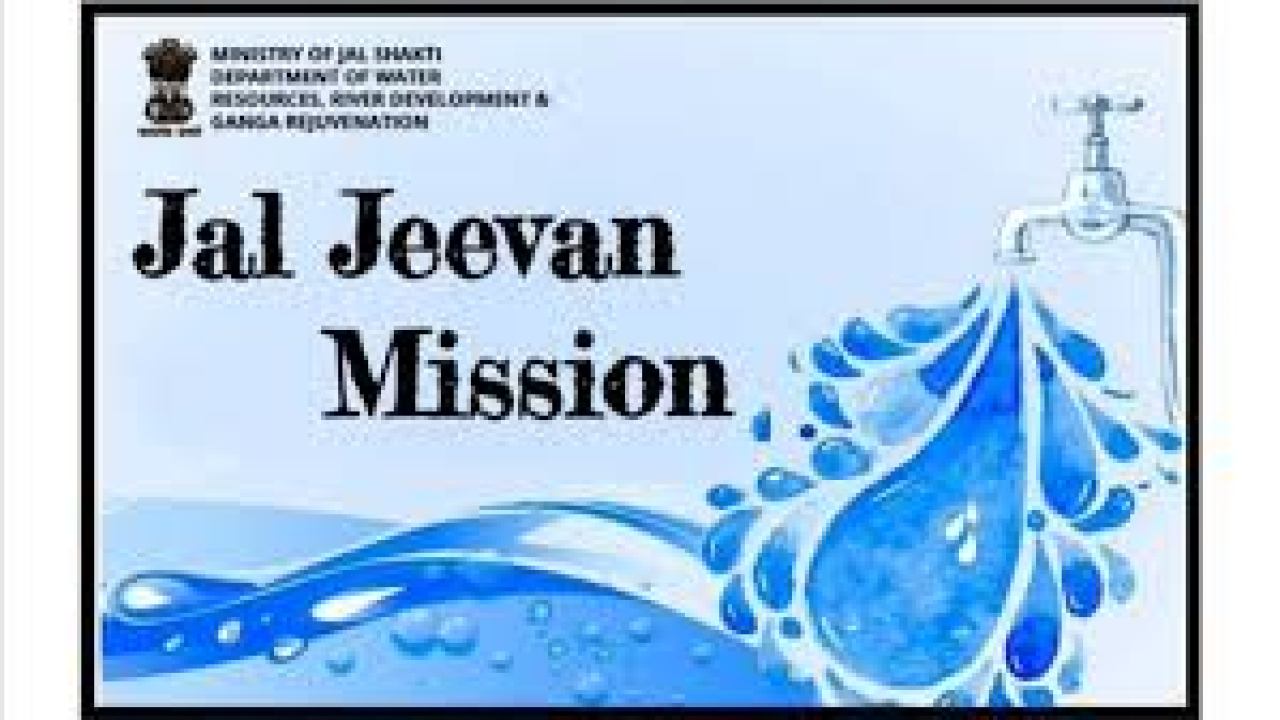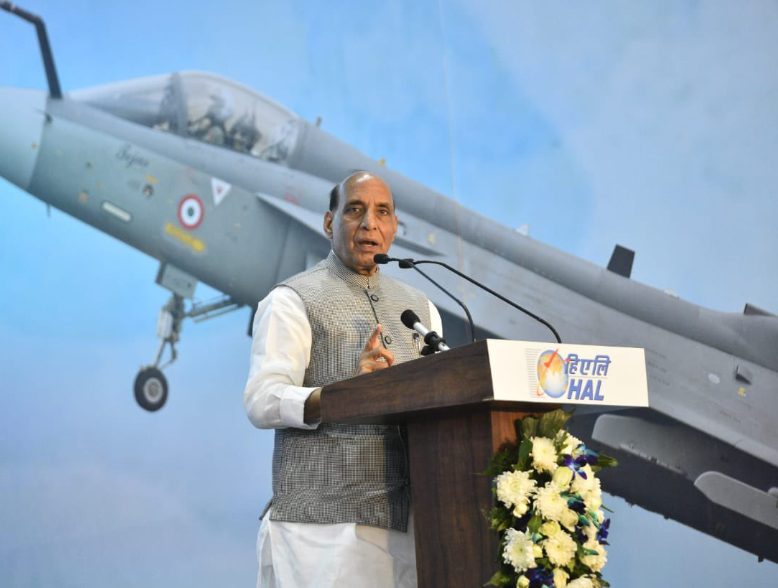
During her Budget speech, the Hon’ble Finance Minister announced JAL JEEVAN MISSION (URBAN) which has been designed to provide universal coverage of water supply to all households through functional taps in all 4,378 statutory towns in accordance with SDG Goal- 6. Providing coverage of sewerage/septage management in 500 AMRUT cities is the other focus area. The Finance Minister also announced that Swachh Bharat Mission (Urban) 2.0 will be launched under the “Health and Wellbeing”vertical. The Finance Minister further said that a Scheme to induct over 20,000 city buses in 5 lakh plus cities including Hilly/ UT/ North East State capital cities (total: 111) will be launched to strengthen organized city bus services, improve urban mobility and ease in living.
The details of announcements pertaining to the M/o Housing & Urban Affairs are as under:-
JAL JEEVAN MISSION (URBAN)
- 2.68 crore is the estimated gap in urban household tap connections that is proposed to be covered under JJM(U). Likewise, estimated gap in sewer connections/septage in 500 AMRUT citiesproposed to be covered in JJM(U) is 2.64 crore.
- Rejuvenation of water bodies to augment sustainable fresh water supply and creating green spaces and sponge cities to reduce floods and enhance amenity value through an Urban Aquifer Management plan are other key areas of the Mission.
- JJM(U) will promote circular economy of water through development of city water balance plan for each city focusing on recycle/reuse of treated sewage, rejuvenation of water bodies and water conservation. 20% of water demand to be met by reused water with development of institutional mechanism.
- A Technology Sub-Missionfor water is proposed to leverage latest global technologies in the field of water.
- Information, Education and Communication (IEC) campaign is proposed to spread awareness among masses about conservation of water.
- Pey Jal Survekshan will be conducted in cities to ascertain equitable distribution of water, reuse of wastewater and mapping of water bodies with respect to quantity and quality of water through a challenge process.
- Mission has a reform agenda with focus on strengthening of urban local bodies and water security of the cities. Major reforms are reducing non-revenue water to below 20%; recycle of treated used water to meet at least 20% of total city water demand and 40% for industrial water demand at State level; dual piping system, electric vehicle charging points; Wi-fi infrastructure in new buildings; unlocking value and improving land use efficiency through adequate urban planning; GIS based master plans of the cities; raising funds through issuance of municipal bonds and rejuvenation of water bodies.
Salient features of Mission
- The total outlay proposed for JJM(U) is ₹2,87,000 crore which includes ₹10,000 crore for continuing financial support to AMRUT Mission.
- In order to promote Public private partnership, it has been mandated for cities having million plus population to take up PPP projects worth minimum of 10 percent of their total project fund allocation.
- For Union Territories, there will be 100% central funding. For North Eastern and Hill States, central funding for projects will be 90%. Central funding will be 50% for cities will less than 1 lakh population, one third for cities with 1 lakh to 10 lakh population and 25% for cities with million plus population.
- Mission will be monitored through a technology-based platform on which beneficiary response will be monitored along with progress and output-outcome.
- Funding from Government for projects will be in three tranches of 20:40:40. Third instalment onwards will be released based on outcomes achieved and credible exclusion will be exercised while funding.
SWACHH BHARAT MISSION (URBAN) 2.0
During her Budget speech, the Hon’ble Finance Minister announced that Swachh Bharat Mission (Urban) 2.0 will be launched under the “Health and Wellbeing”vertical. In her speech, the FM said: “…for further swachhata of Urban India, we intend to focus on complete fecal sludge management, waste water treatment, source segregation of garbage, reduction in single use plastic, reduction in air pollution by effectively managing waste from construction and demolition activities, and bio-remediation of all legacy dumpsites”.
A total outlay of Rs 1,41,678 crores was announced for SBM (U) 2.0, for the next 5 years. This will be a continuation of the Swachh Bharat Mission (Urban), with the following components for funding and implementation across all statutory towns, viz.
- Sustainable sanitation (construction of toilets)
- Wastewater treatment, including fecal sludge management in all ULBs with less than 1 lakh population (this is a new component added to SBM-U 2.0)
- Solid Waste Management
- Information, Education and Communication, and
- Capacity building.
At the end of the Mission, the following outcomes are expected to be achieved:
- All statutory towns will become ODF+ certified
- All statutory towns with less than 1 lakh population will become ODF++ certified ,
- 50% of all statutory towns with less than 1 lakh population will become Water+ certified
- All statutory towns will be at least 3-star Garbage Free rated as per MoHUA’s Star Rating Protocol for Garbage Free cities
- Bio-remediation of all legacy dumpsites.
*****
SCHEME TO AUGMENT CITY BUSES & URBAN GREEN MOBILITY
City Bus Augmentation
A Scheme to induct over 20,000 city buses in 5 lakh plus cities including Hilly/ UT/ North East State capital cities (total: 111) will be launched to strengthen organized city bus services, improve urban mobility and ease in living. Scheme components include procurement, for city operations, of all types of new buses with clean fuel (excluding hybrid/ battery electric buses already covered under the FAME Scheme of Deptt of Heavy Industries (DHI)), associated infrastructure and opex support for a period of 5 years after procurement. An outlay of about ₹15,000 cr has been kept for this Scheme. It will boost automobile industry, generate direct/ indirect employment and facilitate the cities to adhere the Covid-19 guidelines i.e. social distancing in urban transport. Scheme will promote public transport, help in reducing congestion, pollution and accidents and promote clean air in these cities.
Green Urban Mobility
This Scheme intends to provide impetus to green and clean urban mobility projects. It is a step in the direction of meeting climate change mitigation and sustainability goals. The focus of this Scheme is to improve Non-Motorised Transport (NMT) infrastructure, promote innovative urban transit modes, strengthen Intelligent Transport System (ITS) facilities, retrofitting buses & other modes for energy efficiency/ clean fuel, and other technological and innovative measures for green urban transport. An outlay of about ₹ 3,000 cr has been kept under this Scheme for projects, which will be selected through Green Urban Mobility Challenge. This will help in reducing pollution levels through changes in traveling practices, improvement of urban mobility infrastructure and services such as pedestrian/ cycling pathways, last mile connectivity, enhance Information Technology applications and adopt innovations in implementation and financing of urban mobility projects.
Metro Projects
| Name of project | No of corridors | Route length | Sanctioned cost (in Rs crore) |
| Chennai phase-2 | 3 | 118.9 | 63,246 |
| Bangalore 2A and 2 B | 2 | 58.19 | 14,788 |
| Nagpur Phase-2 | 4 | 43.80 | 6,708 |
| Nashik (MetroNeo) | 2 | 33 | 2,092 |
| Kochi Phase-2 | 1 | 11.2 | 1,957 |
Low cost Metro solution for tier2/3 cities
MetrolLite
- 40% cost of conventional metro system.
- Peak Hour Peak Direction Traffic- upto 15,000
MetroNeo
- Rubber tyred metro
- Peak Hour Peak Direction Traffic upto 8,000 and
- 25% of cost of conventional metro system.
Cities to be provided with MetroLite and MetroNeo system
Some of Tier-2 cities like Gorakhpur, Allahabad, Jammu, Srinagar, Rajkot, Baroda, Dehradun, Coimbatore, Bhiwadi- Daruhera etc. are making proposals under MetroLite/ MetroNeo and Nasik has already sent a proposal for MetroNeo, which is under consideration.
REAL ESTATE SECTOR
- Extension of Income Tax Exemption for Affordable Housing Project : In line with Hon’ble Prime Minister’s vision of “Housing for All”, the benefit of 100% exemption from income tax on profits earned from affordable housing projects under Section 80-IBA of the Income Tax Act is proposed to be extended by another year i.e. upto 31st March, 2022.
- Extension of additional deduction of Rs. 1.5 Lakh on Home Loan Interest:In order to provide impetus to affordable housing, the benefits of additional deduction of Rs. 1.5 Lakh for the homebuyers interest paid on home loan (over and above Rs. 2 Lakh under section 24 of Income Tax Act) is proposed to be extended for another year i.e. upto 31st March, 2022 under Section 80EEA of the Income Tax Act.
- To promote REITs (Real Estate Investment Trusts), it has been proposed to exempt Tax Deduction at Source (TDS) for dividend payments to holders of REITs.
HOUSING FOR ALL
GOVERNMENT PROPOSES TO 100% INCOME TAX EXEMPTION FOR AFFORDABLE RENTAL HOUSING PROJECTS
Extract from Union Budget Speech 2021-22:
It is proposed to insert sub-section (1A) in the said section so as to provide for hundred per cent. deductions of the profits and gains derived from the business of developing and building affordable rental housing project.
In order to encourage proactive participation from Public/Private Entities, following incentives have been provisioned through Government of India:
| Sl No | Incentives | Status |
| 1 | Exemption of Income Tax on any profits and gains derived from operation of ARHCs on similar lines as that of ‘Affordable Housing’ under section 80-IBA of Income Tax Act, 1961. | Announced in Budget 2021-22 |
| 2 | Exemption of GST on any profits and gains derived from operation of ARHCs, at par with rental services of residential premises, vide Notification number 12 of 2017- Central Tax (Rate) dated 28th June 2017. | Accepted earlier by Ministry of Finance, Government of India (vide letter dated 5th June 2020) |
| 3 | Project finance/loan at lower interest rate through concessional window under Affordable Housing Fund (AHF) by Housing Finance Companies (HFCs) and Priority Sector Lending (PSL) by Commercials Banks, upon inclusion of ARHCs in Harmonized Master List (HML) on the same lines of ‘Affordable Housing’ | Accepted earlier by Ministry of Finance, Government of India (vide gazette notification dated 24th August 2020) |
Background:
COVID-19 pandemic resulted in massive reverse migration of workers/ urban poor in the country. This brought issues of housing to forefront. In line with Hon’ble Prime Minister’s clarion call of ‘AtmaNirbhar Bharat’, Union Cabinet on July 8, 2020, approved Affordable Rental Housing Complexes (ARHCs) as a sub scheme under PMAY-U. The objective of this scheme is to provide ease of living to urban migrants/poor to provide dignified living with necessary civic amenities close to their workplace at affordable rent.
This Scheme is implemented through the following two Models:
- Model-1: Utilizing existing Government funded vacant houses in cities by converting them into ARHCs under Public Private Partnership mode or by Public Agencies.
- Model-2: Incentivizing Private/Public Entities to Construct, Operate and Maintain ARHCs on their own available vacant land.


.jpg)